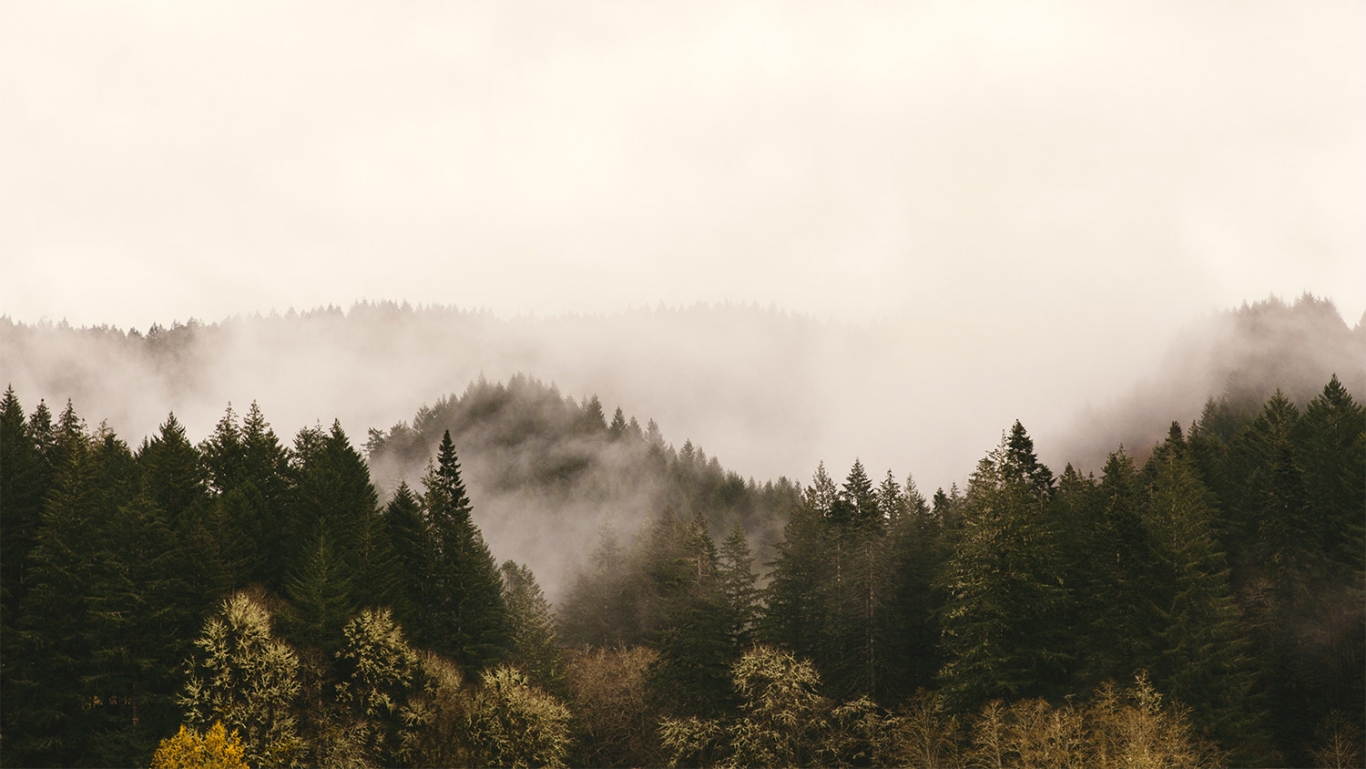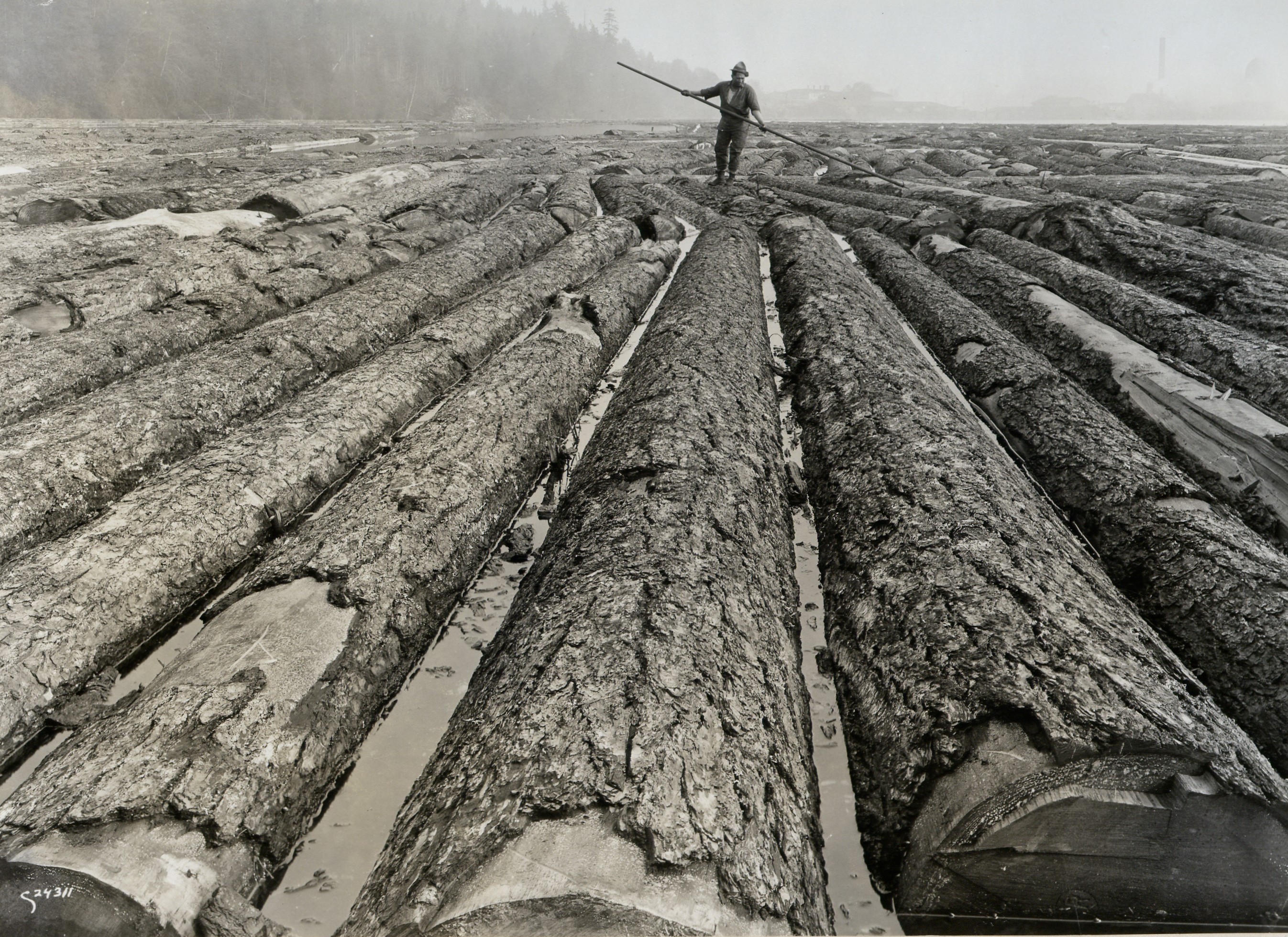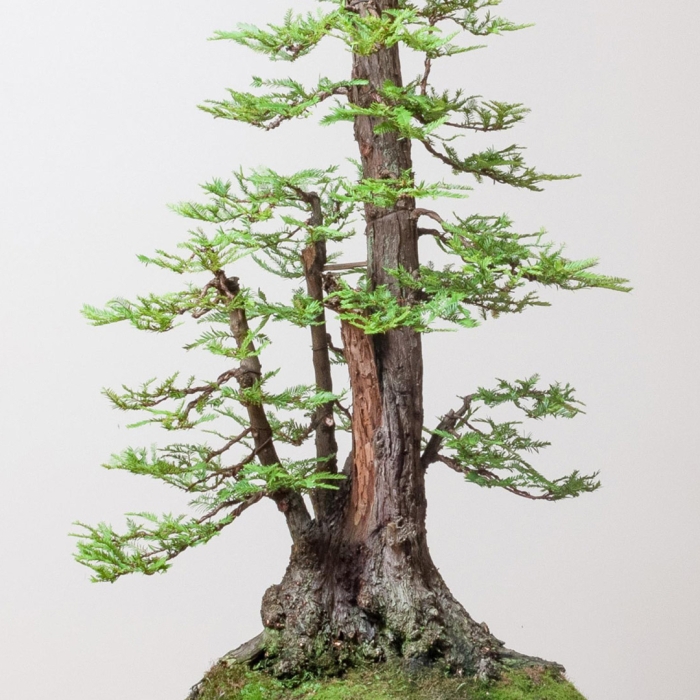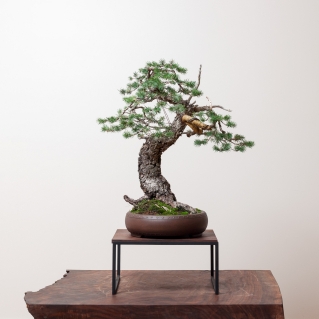A Pacific Northwest powerhouse
There’s a tale about the origins of Portland, OR’s most wellknown nickname. In the early days, the young city was expanding rapidly and surrounding forests covering the Willamette valley were cleared to make room. Streets and buildings were constructed so fast that the leftover tree stumps couldn’t be removed. To avoid the mud, pedestrians found themselves hopping from stump to stump, a sort of Old Portland sidewalk giving birth to the nickname, 'Stumptown'.
These stumps were most likely old growth Douglas-firs, a species whose groves litter the Pacific Northwest. Douglas-fir was, in essence, a reason to hit the Oregon Trail. California, Nevada, Colorado had their gold and their minerals – Oregon and Washington had Doug-fir, estimated to be the tallest, most massive trees in the world at the time.
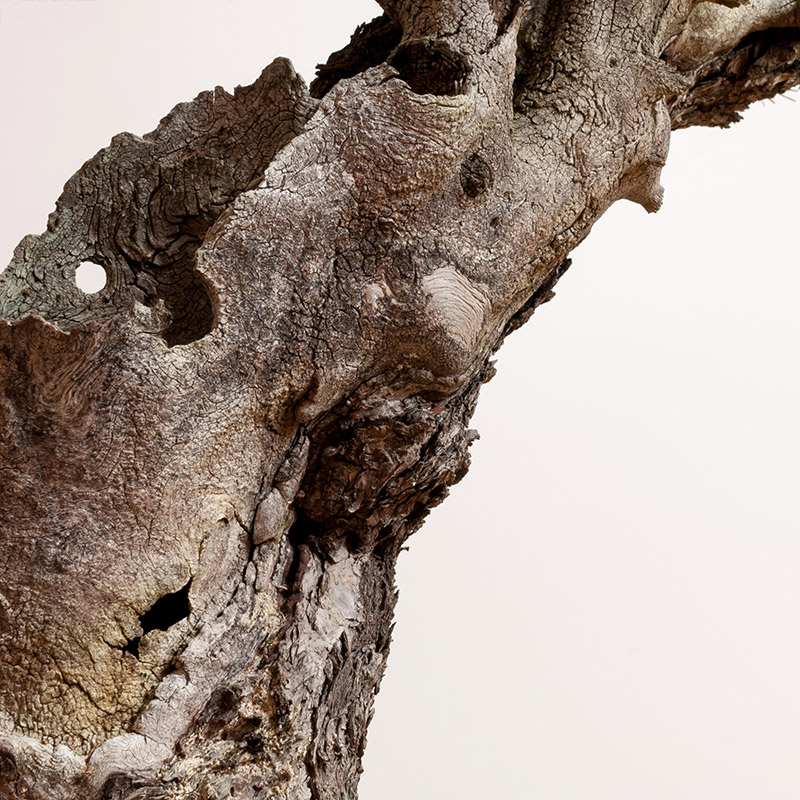
Throughout the Pacific Northwest, it is difficult to go a few miles without seeing Douglas-fir – a towering evergreen dominating the landscape. These are the trees that literally built modern North America, whose materials are still used in worldwide circulation.
Douglas-fir was first taxonomically identified by Scottish botanist David Douglas in 1820. There are two different varieties of Doug-fir – the Coast Douglas-fir, Pseudotsuga menziesii var. menziesii and the Rocky Mountain Douglas-fir, Pseudotsuga menziesii var. glauca. These trees are not true firs, not of the Abies genus. In fact, the latin name for the genus, Pseudotsuga, actually translates to false hemlock, which hints at the trouble scientists had in properly identifying these trees.
"These trees have the capacity to grow as wide as Giant Sequoias and as tall as Coastal Redwoods."
The continental distribution of Douglas-fir looks almost like an upside-down V, the point starting midway through British Columbia with one side running the Pacific Coast down to California and the other side running through the Rocky Mountains all the way to Mexico. The Coast Doug-fir grows from sea-level up to 7,500 feet, while the Rocky Mountain Doug-fir grows anywhere from 1,800 to 10,700 feet in elevation.
These trees have the capacity to grow as wide as Giant Sequoias and as tall as Coastal Redwoods. There are many accounts, from reputable scientists, of giant Douglas-fir being logged in British Columbia that were said to be over 400 feet tall.
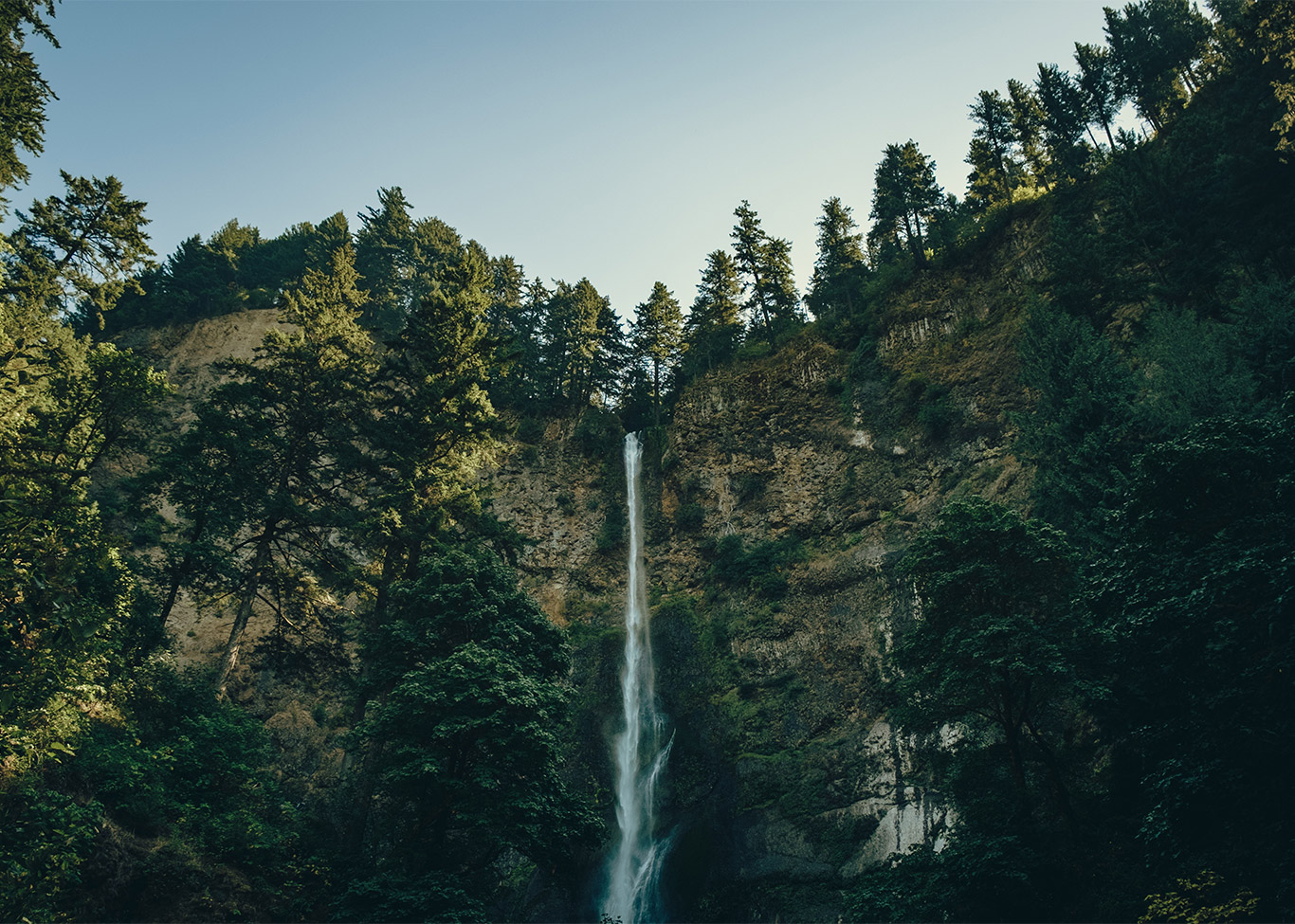
Keep in mind that the tallest Coastal Redwood known today is 379.7 feet tall. Doug-fir is no joke. And yet, beyond the native Oregonians who proudly tattoo the silhouette of their state tree to forearms and calves, these trees don’t receive much acclimation in comparison to the famous giants of California. But they sure do demand it.
Coast Douglas-fir are the second-tallest growing coniferous tree species on the planet. The tallest of them, called the Doerner fir in Coos County, Oregon, stands at 327ft - the third tallest individual tree in the world. The most massive Doug-fir, the Red Creek Fir, has over a 13 foot diameter and stands at 242 feet on Vancouver Island, BC; it is the most massive individual tree in the family Pinaceae, with an estimated total wood volume of 1,145 cubic feet.
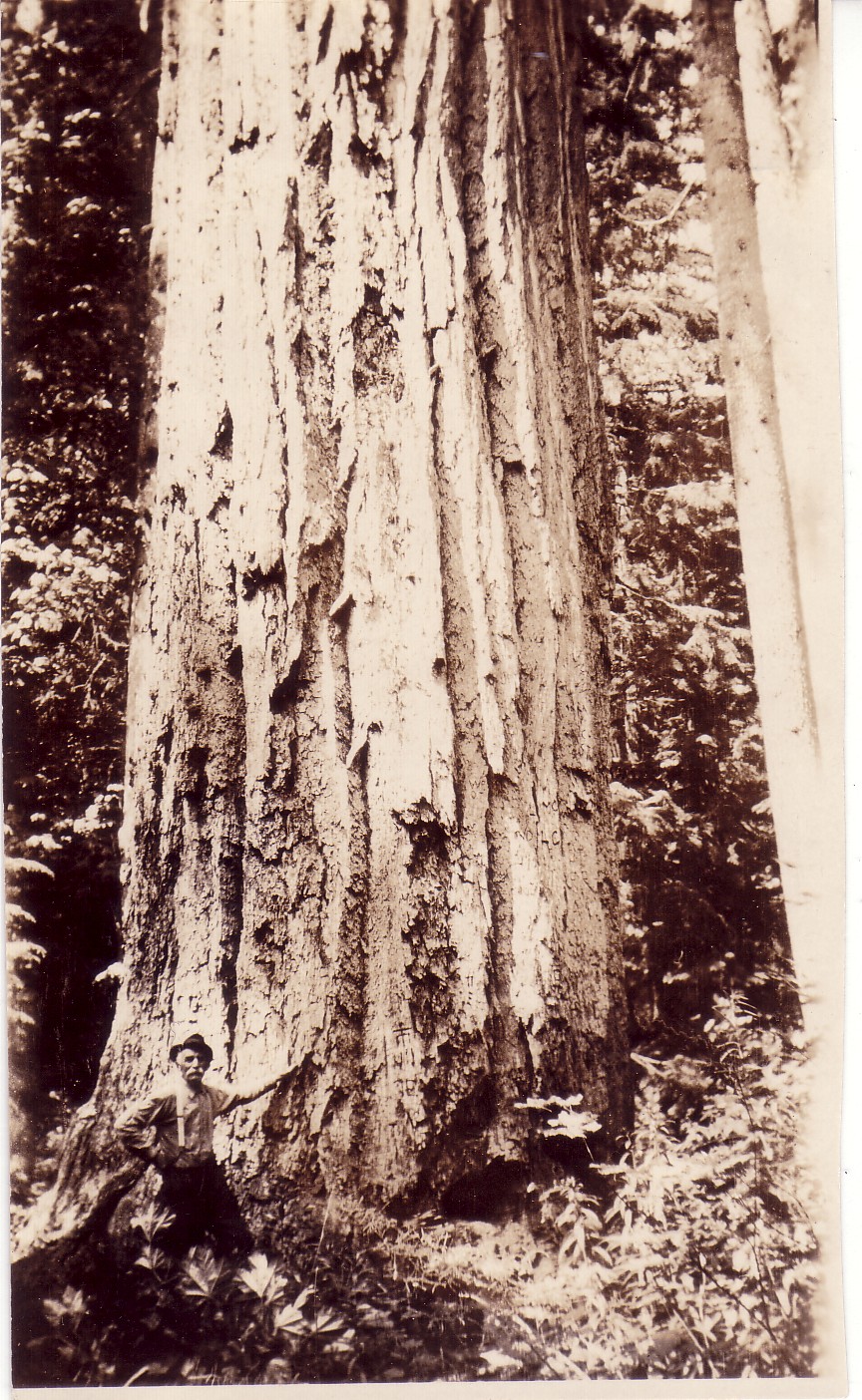
Many Coast Douglas-fir are documented around 650 years old, with current ages over 800 years being very rare. Doug-fir over 1,000 years of age have been documented from downed trees or stumps, but no living specimens are known. On Vancouver Island, a tree fell over in a lightning storm that was documented as est. 1,350 years old. It is thought that many more Doug-fir in what remains of the old growth forests in the Pacific Northwest could very well be in the same age range.
As with many resources, Douglas-fir became a hot commodity as the West settled and expanded. Before Anglo-explorers laid their eyes on massive forests, groves of Doug-fir sustained Native American tribes who used the wood for harpoons, caskets, utensils; the pitch was used for sealing joints, canoe caulk and medicinal salve; the needles were burned for spiritual purposes. The tribes lived with and by the forest, an ecosystem where many animals and valuable plants thrived. The tree was even used by Hawaiians who used the influx of driftwood across the Pacific to craft war canoes, along with utensils and other sundry.
"Economically speaking, Douglas-fir has been the most widely used tree for producing wood items used by humans."
Around 1848, logging operations began to ramp up in the Pacific Northwest as investors from San Francisco and other gold-hungry towns set up mills to ensure a reliable flow of building materials for the voracious mines. Into the 1880’s, as the rush to construct transcontinental railroads ensued, the demand for lumber did not abate. Most of the railroads constructed in the West were made with Doug-fir. Technological advances and booming constructive industry led to massive corporate interest in the forested lands of Oregon and Washington. Soon, much of the forestland was owned by private companies looking to make a profit in the paper industry, lumber exports, or with railroad supplies.
Between 1897 and 1905, political heavyweights in the lumber industry began to get nervous about the long-term output of such a valuable resource. With legislation and pressure from private stakeholders, the federal government began to tuck away reserve forest land to be managed by what is now known as the Forest Service. The purpose of this land was to strategically manage it to ensure sustainable and long-term yields for the lumber industry—the main purpose was not based in preservation. But it was also around the same time that the idea of National Parks began to take hold in an effort to fully protect the land and its forests from capitalist interference.
Throughout the 20th century, environmentalists fought hard to expand these protected wildernesses. It is mostly in these protected areas that the last old growth Doug-fir forests can be found – all others were logged, developed, or converted to monoculture plantations waiting to be clear-cut.
Economically speaking, Douglas-fir has been the most widely used tree for producing wood items used by humans. You can find it in framing lumber, beams, boards, cabinetry, railroad ties, telephone poles, plywood veneer, wood fiber for paper, Christmas trees, even in old military vessels.

One of the largest wooden buildings in the world is made from Doug-fir – the Tillamook Naval Air Station. The hangar was built in 1942 to house U.S. Navy blimps; later it was converted to the Tillamook Air Museum. The building stands at 1,072 feet tall, 296 feet wide, made of huge beams from the heyday of old growth logging.
Douglas-fir is also one of the most common species used for Christmas Trees, an industry that in 2014, marked over $1 billion USD in sales. Each year, it is estimated that between 35-40 million Christmas Trees are sold in the United States, majority of those trees being farmed and produced in Oregon and Washington. That telltale smell of Christmas is associated with the fragrant scent of Douglas-fir – a little piece of the Pacific Northwest to lift your holiday spirits.
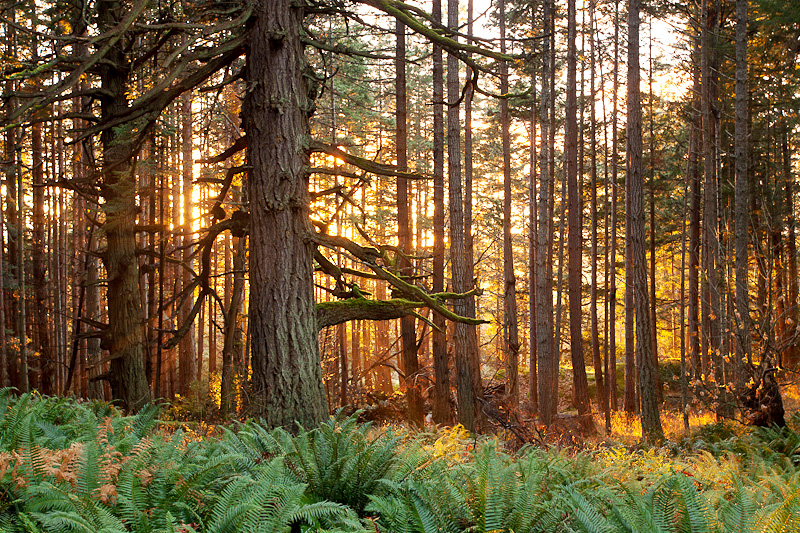
In bonsai, Doug-fir remains an elusive subject, requiring a pioneering spirit in the practitioner. Just as the botanists had a difficult time classifying the tree, bonsai professionals that have attempted to treat Doug-fir like Taxus or Redwood found little luck with a blanket approach. The tree has all the characteristics to make a great bonsai - rugged bark, relatively small needles, typically fascinating trunk details and movement. In an effort to create bonsai that reflect a culture or landscape, such a historic and predominant species in North American history has quite the story to tell.
"It is one of those trees that is quietly embedded in every facet of American culture, not only materially - from the wood framing our homes to the paper used in school - but culturally, as these emblems of a wild boundless West."
Douglas-fir are that quintessential evergreen - tall, pyramidal growth and wide, drooping boughs. It is one of those trees that is quietly embedded in every facet of American culture, not only materially - from the wood framing our homes to the paper used in school - but culturally, as these emblems of a wild boundless West and the resulting richocet towards preserving North America's last great forests. They represent a gargantuan landscape of bygone times, an era of North America before the haze of consumptive, industrial society settled across the continent. As the protected forests lands continue to recover, we will continue to marvel at the unremitting rigor and colossal potential of Pseudotsuga menziesii.

